Email Marketing with Noah Kagan - Part 1
Last updated on January 2, 2023 at 13:55 PM.Anyone involved in content marketing knows that the World Wide Web is full of concentrated knowledge, expert tips and training on SEO and SEM, social media marketing, content strategies, link building and much more. But in everyday life there is often no time to follow all these digital experts and platforms. That’s why we created our blog series “Decoded”. Each post is dedicated to a different specialist and their input on a topic from online marketing. This time it’s the turn of email marketing expert Noah Kagan.

Email Marketing: The Best Tips from Noah Kagan - Part 1
Hardly any business can do without strategic email marketing. This important element in the customer journey enables you to generate leads that later turn into paying customers. But how do you get to the email addresses of your target group? How do you make them stand out from the multitude of emails your contacts receive every day? And how do you get them to click on the links in your newsletter? To find answers to these questions, let's look at the best email marketing ideas from digital expert Noah Kagan and his team at Sumo.com.
Noah Kagan has already had an impressive career in online marketing. He worked as No. 30 at Facebook and No. 4 at Fintech company Mint. In 2010, he founded Sumo, which provides free marketing tools to small businesses so they can increase their traffic. With these custom-built tools, he and his team could grow the mailing list for AppSumo to over one million subscribers. Noah has published guest articles in the Huffington Post, Forbes, and Apple News. He also shares his knowledge from personal experiences, conducted studies, and interviews with other digital experts in blog posts, YouTube videos, and podcasts.
By the way: The first two articles in the Decoded series focused on digital expert Neil Patel and his SEO hacks for better search engine rankings. In the third and fourth parts, we looked at Michael Stelzner's tips for successful social media marketing.
Tip 1: Master the basics of email marketing
Before we look at how you can improve your email marketing, here's a recap of the basics of email marketing. Noah Kagan and his team recommend:
- Write about something your audience finds worth reading and show them how you can help solve their problems. Write compelling subject lines and use your name instead of a brand name in the sender field. This builds trust with your readers. The advantage is that the open rate will increase
- Ensure regularity. Whether it's daily, weekly, or once a month, it's important that you stick to this rhythm. According to HubSpot studies, the highest open and click rate is 16-30 emails per month. Therefore, try different frequencies to find the best strategy for your target audience.
Keep your newsletter simple and short, because your readers have less and less time - every second 3.4 million emails are sent worldwide. Three to five paragraphs in simple sentences with easy-to-read wording are optimal.
Tip 2: Leads that really count - grow your mailing list
Strategic email marketing means aligning your activities with your target audience. This also applies to your mailing list. What good is it if you have 1,000 contacts, but only ten of them are really interested in your company or product? Instead of shopping around for expensive email lists somewhere, you can gain the really important contacts - the potential leads - for next to nothing with countless ways to do it. Dean Yeoung and his colleagues at Sumo have put together these ideas for lead generation:
- Create a landing page with a content upgrade, such as an e-book, guide or video. Only in exchange for the email address will users receive the content offer. The advantage: You can save the contacts from this campaign as a separate segment in your CRM.
- Add a newsletter sign-up form to your home page, like Brian Dean does on backlinko.com. Only his subscribers will receive the exclusive SEO tips.
- Add a line in the header that encourages newsletter signup and remains visible to website visitors the entire time.
- Displays an exit popup as soon as the visitor wants to leave the website. With a content or deal that is interesting for the visitor, you can attract more subscribers. Sumo has seen conversion rates increase by over 60 percent with this type of pop-up.
- Offer free trials of your services. For example, in exchange for their email address, users can use a tool you've developed for 30 days. If you keep them updated regularly during that time, a significant portion of those testers will turn into paying customers.
- If you have an online store, you can offer a one-time discount for the email. A pop-up is perfect for this.
There are many more ideas to expand your mailing list. You can find concrete examples from other brands in the article "How To Build An Email List: 60 Free Ways You Can Use Right Now".
Tip 3: Achieve 78% open rate - formulate emails correctly
Email marketing only works if your readers open your emails and click on the content. The key indicators for this are the open rate and the click rate. Email specialist Jay White achieved a 78% open rate on one of his emails. Sumo's Megan Mahoney asked him how he did it.
- Good emails use storytelling. They draw the reader in with emotion. These can be anecdotes from everyday life or hooks that pose riddles and lead to a solution.
- You can achieve high open rates with e-mails that offer added value. Instead of praising the company's success ("we are so great"), the focus should be on the reader: To what extent does the product or service help them solve their problem? The exception is personal experiences, which you can write in the first person, as long as they serve the purpose of your email.
- Respond to your reader's objections. Financial coach Ramit Sethi does this very successfully. In one of his emails, he took a series of questions that potentially interested people in his online course probably had in mind, and then answered them at eye level.
Tip 4: Getting through to your readers - optimizing the technical side of your emails.
In addition, there are some technical aspects you can change to increase the open rate of your email campaigns:
- Ask your subscribers to put you on their trusted senders list so your emails don't end up in spam or the advertising folder like Gmail.
- Check your bounce rate and delete any email addresses that are out of date from your mailing list.
- Optimize your emails for mobile devices, because 46% of emails are opened on smartphone or tablet, according to Sumo.com. This applies not only to Responsive Design but also to the text length of the sender, subject line and pre-header.
- Decide on the name as the sender: for solo self-employed, this can be your own name; for companies, it can be the brand name or a combination of an employee's name and the company name.
- Segment your distribution lists and sort recipients by engagement, past interactions, buyer's journey, or buyer's persona, for example. This will make it easier for you to reach the right audience with your emails.
- Test two different versions of a subject line on a small segment of your mailing list and analyze the open rates. Then choose the one with the higher open rate as the best option.
- Double-out: For those who didn't open your email the first time, send the same email again a week later, for example, but with a different subject line. Noah Kagan achieved an additional 11% open rate on his second attempt. In numbers: an increase of 7,028 opened emails for one minute of extra work.
For more ideas on how to increase the open rate of your email campaigns, check out "The Complete Guide To Email Open Rates (Plus How To Increase Yours)" by Devan Ciccarelli from the Sumo team.
Tip 5: Free up time for other tasks - marketing automation through targeted workflows
The more people subscribe to your newsletter, the more effort it takes to keep them all up to date. This is where automation based on pre-defined, goal-oriented workflows can help. Set up automatic emails to be sent when the subscriber performs a specific action, such as signing up for the newsletter, or the data situation requires an email because the customer has purchased nothing in 90 days, for example. This saves you valuable time that you can use for other things.
Ash Read of Sumo.com suggests the following email workflows:
Welcome to new newsletter subscribers:
Thanking them, telling them what to expect from the newsletter, and providing reading material with some links to older articles. This can also be an announcement that, for example, they will each receive an email with the blog's most popular articles over the next four days - also automated. Engagement is highest in the early stages, so there's great potential here to convert leads into paying customers.
Getting Started so subscribers can get an overview:
Once customers have booked one of your services or purchased one of your products, you can send them a series of emails to let them know what's next. As an example, Ash cites the SEO experts at Ahrefs, who summarize the overall offering in their first email, and have included links to their most popular SEO guides in the second. In the third, they briefly explain the benefits of one of their products mentioned in the guides, and the fourth email invites readers to join a private Facebook group. This way, you can make your subscribers a part of your community from the start.
A new lead often wants to learn more about your company or product before they're ready to buy. This is another area where an automated workflow can help. For example, if he has exchanged his email address for an e-book, in the first email you summarize the content of the e-book again in a few words appealingly and offer the opportunity to talk to the sales team. In the second email, you ask if the reader has found all the information they need or would like to learn more about your solutions, and again offer to talk to one of your experts.
In the next part of the Decoded series on Noah Kagan, we'll look at four more email workflows that can help you build subscriber loyalty. Stay tuned!
In the meantime, look at the other articles in the Decoded series: The first two articles focused on digital expert Neil Patel and his SEO hacks for better search engine rankings. In the third and fourth parts of the series, we looked at Michael Stelzner's tips for success in social media marketing.

What does Gerrit from Crispy Content® have to say about it?
"To me, email marketing is THE topic in content marketing: personalized, scalable, consistently measurable and used daily by everyone capable of doing business - it doesn't get any better than that. Noah's tips do a wonderful job of showing how creative content, performance orientation and sales technique blend here.
One of my favorite tips is to keep the distribution list clean, i.e. to delete inactive contacts. After all, dialogue requires at least two people, and if one is disinterested, the monologue won't turn into a sale later on. So out with it!"
Creative, smart and talkative. Analytical, tech-savvy and hands-on. These are the ingredients for a content marketer at Crispy Content® - whether he or she is a content strategist, content creator, SEO expert, performance marketer or topic expert. Our content marketers are "T-Shaped Marketers". They have a broad range of knowledge paired with in-depth knowledge and skills in a single area.
More topics you might like

The Epic Split: Why B2B and Brand Are Not Opposites
Creative B2B branding that builds relevance, attention and trust. Why brand, culture and emotions matter in modern B2B marketing.

Strategically Designing Topic Worlds for Personal Brands in ...
How topic worlds for personal brands in B2B drive clarity, reach, and impact.

AI Competence Over Tool Overkill: The Path to True Content E...
How content expertise takes brand communication to the next level — with practical, actionable recommendations.

Service-as-a-Software: When the Machine Does the Job
Automated AI services are redefining B2B marketing: greater efficiency, new governance challenges — everything you need to know.

1,000 AI Agents And One Employee
Discover how AI agents are reshaping organizations and how to bridge the gap between technology and your workforce.

The End of Inbound Marketing as We Know It
Why inbound marketing is reaching its limits for B2B service providers and which channels decision-makers truly use today.

AI Assistants vs. AI Agents: The New Autonomy
How autonomous AI agents and no-code platforms are automating marketing processes and unlocking new potential.
.png)
Why Reach Alone No Longer Convinces
Platform rules end mass outreach: Why content strategies are now the key differentiator in B2B marketing.

Agents, Not Ads: Browsers Are Transforming Marketing Strateg...
Agent-based browsers are disrupting traditional content strategies. Discover how organizations can adapt and capitalize on emerging opportunities.

How AI Competence Is Becoming a Corporate Imperative
The AI Act requires companies to develop the AI skills of their own employees from 2025. Here's how they can succeed.

The Signal in The Noise: How Brands Ensure Relevance And Imp...
How content marketing works despite the digital noise: strategies for agencies, companies, and decision-makers in the digital age.

Why Most AI Tests Don’t Deliver Reliable Results
Why "AI experts" should stop spreading misinformation: a realistic comparison between research and AI tools.

How Products Become Content Engines For B2B Brands
How B2B brands are leveraging product-driven content for innovative brand communication and activating communities.

Generative AI: A Crisis of Trust for Agencies and Enterprise...
How AI-driven errors are reshaping agency workflows and which methods secure trust and quality. Deloitte case study, trends, and practical tips.

Google Update: Removal of &num=100 and Its Impact on SEO...
Google Update 2025: The deactivation of &num=100 transforms SEO tools, reporting, and AI data. Here’s how industries and businesses are responding.

B2B Reach: Strategic Partnerships over Content Production Li...
How brands gain visibility: Partnerships and user-generated content are replacing traditional content strategies in B2B. Learn more now.

Germany’s Data Protection Utopia: A Basement Full of Illusio...
Germany’s data protection utopia: Why basement LLMs are pure illusion – and how pragmatic rules can safeguard innovation and competitiveness.

Content Strategy for Strong Brand Perception
Discover how strategic content shapes brand perception, strengthens loyalty, and drives measurable growth across all channels.
Success of Viral Marketing Campaigns Without AI
The greatest campaign successes are based on emotion, social dynamics, and the courage to experiment. Discover how brands create genuine attention.

Content Marketing 2025: Opportunities, Risks and the Evolvin...
How AI is transforming content marketing and how businesses can safeguard quality, differentiation, and trust.
.jpg)
Enablement for Marketing Teams: Securing the Future with AI ...
Enablement equips marketing teams for AI and digitalization. Discover how structured development enables real transformation.

Content Strategy 2025: Uniting Quality and AI in Marketing
How companies use AI, content audits, and governance to implement sustainable content strategies and avoid content chaos.
-1.jpg)
GPT-5 in Practice: What the Data Says About Content Quality
GPT-5 testing proves fewer errors and more consistency. Discover how your content production can benefit today.

Achieve Greater Reach with Existing Content
How companies can achieve greater reach and efficiency by leveraging existing content—complete with real-world examples and a step-by-step guide.
-1.jpg)
Digital Trust: Standing Out from Generic Content with Qualit...
Strengthen digital trust: How companies can win with quality and transparency instead of generic AI content. Tips and real-world examples.
.jpg)
Cultural Adaptation: Successful International Brand Communic...
Cultural adaptation boosts the impact of international marketing campaigns. How can it be achieved in practice? Expert insights & best practices.

AI Image Generation: Practical Insights for Marketing Teams
How AI image generation with Midjourney is transforming marketing. Insights, opportunities, and practical tips for modern communication teams.

Communication Challenge: Making Expertise Visible in B2B Mar...
Discover how companies can make their expertise visible in brand communication and optimize their B2B marketing strategy.

Successfully Implement Content Strategies: Your Guide
Translate strategies into marketing and content formats: How to make your communication more impactful. A practical guide for decision-makers.
.jpg)
AI Marketing Consulting: Automation in the MarTech Ecosystem
AI marketing consulting, no-code platforms & workflow automation: Achieve a smart transformation in the MarTech ecosystem.

Clear ROI: Controlling Marketing Budgets with Metrics
Marketing clarity: How to secure budgets with KPIs and prove impact. Practical, data-driven, and tailored for marketing decision-makers.

Demand Gen Before the Comparison Phase: Gaining a Competitiv...
Discover how early-stage demand generation empowers B2B brands to enter new markets efficiently and reduce lead costs.

Marketing Departments: Combining Human Expertise and Technol...
How marketing teams scale efficiently: combining human expertise and automation for real impact. Practical examples and first steps included.

Efficient Transformation in Marketing: Escaping the Resource...
Rising demands, static teams: How to approach marketing transformation in a structured and successful way – including a real-life example.

Modular Content – Boosting Marketing Efficiency
Modular content helps marketing teams save budget and effort. Here's how to increase efficiency and consistency in communication projects.

Knowledge Retention in B2B Marketing: Methods & Tools
How to retain knowledge in B2B marketing. Practical tips on processes, tools, and learning culture. More efficiency for your team.

Using Storytelling Frameworks to Cut Through the Noise
How to increase B2B content effectiveness with structured storytelling – practical insights for immediate use

Work More Efficiently: Master System Diversity in Marketing
System diversity slows down marketing teams. Here’s how to make your infrastructure more productive and future-proof.

Structure Drives Performance: Clear Roles Ensure Content Qua...
Structured teams ensure content quality: How to strengthen accountability and output in your marketing organization.

Work More Efficiently: How Clear Standards Help Marketing Te...
How marketing teams save time, ensure quality, and grow internationally with clear standards: The first step toward a scalable content factory.

How The Content Factory Solves Major Marketing Issues
Build a high-impact content team with the “Content Factory” framework—solve budget, talent & execution gaps through structured marketing processes.

Is the B2B Buying Cycle Really More Complex?
Discover why the fundamental B2B buying process remains unchanged despite new digital touchpoints, and how to leverage this for effective strategies.

How to Make Technical Content Work for Decision-Makers
Transform complex technical content into engaging, strategic insights that resonate with decision-makers in industrial, tech, and B2B sectors.
.jpg)
Maximizing ROI from Thought Leadership Content
Learn how to turn thought leadership content into a measurable business asset that drives trust, engagement, and conversions.

Top 5 Criteria for Choosing the Right Content in B2B Marketi...
Discover the 5 key criteria for selecting the right B2B content formats. Learn how to tailor your strategy to personas, touchpoints, and goals.

AI and Cultural Expertise for Your Marketing Organization
This post explains why the right mix of technology and cultural know-how is indispensable when utilizing Artificial Intelligence.

AI Tools For Content Creator
Explore Crispy Content's AI integration strategy that enhances content creation while preserving human creativity and control.

How Our Content Marketing Strategies Drive Brand Awareness, ...
Discover how our content marketing strategies drive brand awareness, boost traffic, generate leads, and improve sales outcomes.

Master the Art of Content Strategy for Business Success
Unlock the secrets to developing a content strategy that aligns with your goals, addresses audience needs, and elevates your brand authority.

Webinar: Building An AI Content Machine
Discover how AI transforms content production strategies. Register for our free webinar with AI experts Gerrit Grunert and Jens Palm on November 28th!

How Pharmaceutical Companies Optimize Their Marketing with A...
Discover in our latest blog how pharmaceutical companies can optimize their marketing retainer with the help of AI.
.jpg)
Webinar: Building An AI Marketing Machine
Explore the transformative power of AI in B2B marketing with our webinar "Building an AI Marketing Machine" in cooperation with Salesforce and factory42!

Mastering LinkedIn's Labyrinth: Unveiling Algorithm Secrets
Unlock LinkedIn's potential with our guide. Discover algorithm secrets, optimize content strategy, and learn about future trends.

Revolutionizing Content Creation: The 6 Best AI Tools for Wr...
Discover out top 6 AI tools transforming content creation. Enhance your writing process and quality with AI technology – don't miss this opportunity!

Unleashing the Power of Ecommerce SEO
Unleash the Power of Ecommerce SEO: Fix broken links, optimize content, dominate Google rankings, and attract eager customers.
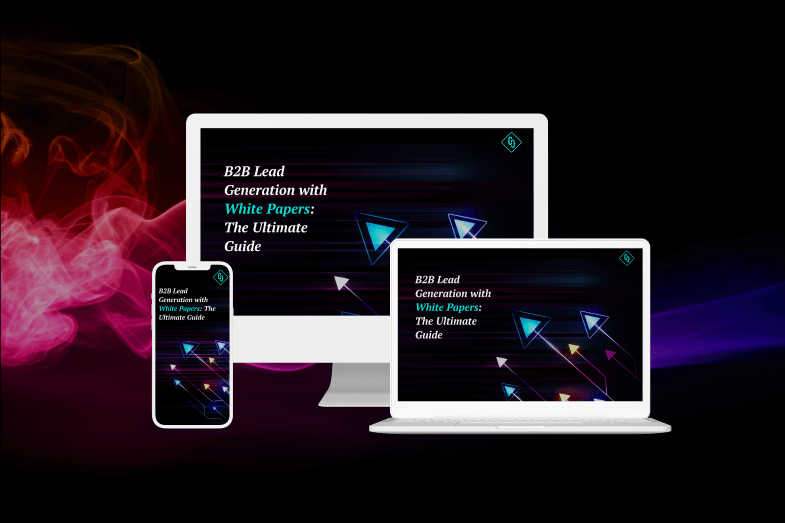
B2B Lead Generation with White Papers
Lead generation with white papers is one of the most effective sales measures in B2B business. Why? We explain that in this article!

The Content Audit - Part 2
In part two of our mini-series, we explain our 4-step road map to our successful content audit resulting in higher rankings in search engines.

The Content Audit - Part 1
In this article we show you just how important a content audit is, how SEO cannot live without good content, and why you need to check in regularly.

The Paid Media Audit - Part 2
In second article of our mini series we show you how to audit your paid media in seven thorough steps.

The Paid Media Audit - Part 1
In this article we take a look at how paid advertisement works, the different approaches of a Paid Media Audit, and which tools can help you up your game.

The CRM Audit - Part 2
In the second part of this mini-series, we'll show you how to perform a CRM audit and get more ROI from your data in seven easy steps.

The CRM Audit - Part 1
In the first part of this mini-series we explain what a CRM audit is, what the benefits are, and which tools to use.

The benefits of a successful pitch-workshop
Our idea of a good workshop consists of six outcomes that must be achieved at the end of a succesful pitch workshop. Discover them here.

Why regular agency pitches don’t work
11 reasons why agency pitches fail to do what they’re designed to do: to choose the right agency for the job – and our proven solution for it.

How to host a perfect pitch-workshop
A workshop instead of a standard pitch? In this article, we explain how to host a perfect pitch-workshop and show the benefits.

SEO For Pharma Companies: Why There is No Way Around It
Pharmaceutical companies, whose products are so in need of explanation and demand, cannot do without SEO. We show why this is so.

HubSpot History: What Made HubSpot a Success
The history of HubSpot shows how it became one of the most popular and demanded marketing software to date. Let's dive into it!

Content-Marketing For Pharma Companies
Nowadays, no pharmaceutical company can afford not to communicate with its target group. In our article, we show why this is the case.

Crispy Content® is looking for a Senior Content Team
Crispy Content® is looking for a Senior Content Strategist (m/f/d) and a Senior Project Manager (m/f/d).

Decoded: Content Marketing and SEO with Brian Dean - Part 2
The best hacks from SEO genius Brian Dean: Learn which strategies you can use to improve your ranking and create gripping online videos.

Decoded: Content Marketing and SEO with Brian Dean – Part 1
The best hacks from SEO genius Brian Dean: Learn which strategies work best for content marketing, PR and landing pages.

TikTok Marketing: 6 Reasons B2B Brands Should Use It
TikTok is one of the quickest growing social media platforms at the moment. We show you 6 reasons why B2B brands should use it too.

Decoded: Content Marketing with Gary Vaynerchuk – Part 2
Learning from the "Content God" - Part 2: Learn from GaryVee which social media strategies will make you successful in 2021.

Decoded: Content Marketing with Gary Vaynerchuk – Part 1
Learn from the "Content God": Find out how GaryVee reaches millions of fans with micro-content, storytelling and an authentic brand - part 2 follows.

An Entrepreneur's Guide to Social Media Management Software
Still wondering what sets social media pros apart from the rest? Social media management software they pay for. We list the ones that are worth to pay for.

Email Marketing with Noah Kagan - Part 2
Do you want to generate leads and more sales through effective email marketing? Discover tips 6 to 8 from online marketing expert Noah Kagan.

Email Marketing with Noah Kagan - Part 1
Want more leads and sales through effective email marketing? Discover the first 5 tips from online marketing expert Noah Kagan - part 2 follows.

The Customer Journey
In "Content Marketing 101" Crispy Content® highlights the most important topics in Content Marketing – here we focus on the customer journey.

The Conversion Funnel
In "Content Marketing 101" Crispy Content® highlights the most important topics in Content Marketing – here we focus on the conversion funnel.

The 7 Steps SEO Audit
In this article, content marketing expert Gerrit Grunert from Crispy Content® shows how anyone can perform an SEO audit in 7 steps.

Content Marketing Decoded: Social Media Examiner – Part 2
You want to improve your performance on Facebook, Instagram, LinkedIn and TikTok? Discover 6 practical tips from Social Media Examiner Michael Stelzner.
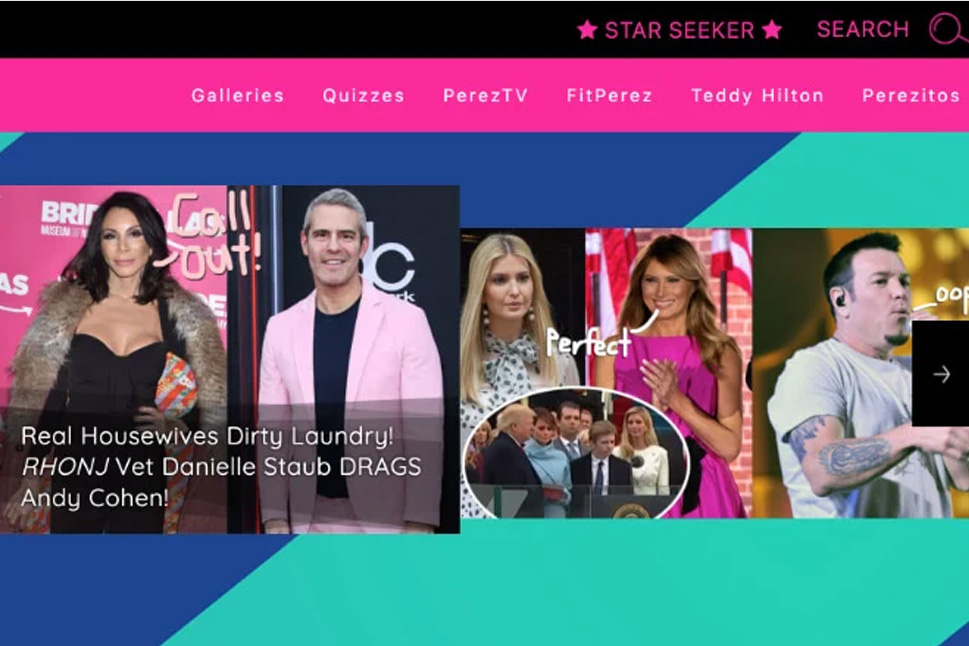
Successful Blogging: 14 Effective Example – Part 2
Blog success factors, blog millionaires and your next steps - all this in the second part of our little series on "Successful Blogging".

Successful Blogging: 14 Effective Example – Part 1
We have collected 14 blog examples that have been successful over the last six years. And we have investigated why this is so. Here comes part 1!

Content Marketing Decoded: Social Media Examiner – Part 1
Looking for ideas for your marketing on Facebook, Instagram, LinkedIn and TikTok? Discover 7 practical tips from Social Media Examiner Michael Stelzner.

Content Marketing Decoded: The SEO Hacks of Neil Patel
You want to improve the search engine ranking of your website? In our series we present the most important SEO tips from digital expert Neil Patel.
.jpg)
FREE Online Course: “Making Content” (7 Lessons)
An online course with 7 lessons to produce high-quality digital content – quickly, easily and affordably.

10 Steps For Your Perfect Website Content Strategy – Pt. 2
A guide for content marketers who want to develop a website content strategy. The second part deals with features, structures, keywords and governance.

10 Steps For Your Perfect Website Content Strategy – Pt. 1
A two-part guide for content marketers relaunching a website. The first part deals with goals, target groups, positioning, topics and formats.

15 Content Tools We Still Use | Part 2
We present the tools we use at Crispy Content® to realize content production. Today: Content Production and Content Distribution.

15 Content Tools We Still Use | Part 1
We present the tools we use at Crispy Content® to realize content production. Today: Content Discovery and Content Planning.

Post COVID-19: Reasons Germany will be Your Next Best Market
There will be a future after COVID-19 - and it probably looks more promising in Germany than in most countries of the world. We show you why!

How to Do Content Production for Blogs with Airtable
In this detailed overview, we explain how complex content production projects can be completed with Airtable.

"Car dealerships need social media marketing"
The car industry has been severely affected by the corona crisis. Gerrit gives tips on how the crisis can be used as an opportunity with social media.

Content Marketing Agency - 10 Lessons Across 10 Years
With our ten lessons from ten years as a content marketing agency you can save time, money and stress by reading this now!

Gerrit Grunert: A HubSpot Interview with CIO Applications
What does an international company have to consider when choosing a German HubSpot partner? Gerrit Grunert reveals this in an interview. Read it now!

SEO in Real Life
Here we explain how Google works with a small, real-life theater game from our SEO workshop. Learn more here!

How To Create A Persona
Why are personas important for content marketing? How many do you need? Read about this and more in Gerrit's new book "Methodical Content Marketing".

The digital transformation of the PR Agency
How can PR agencies embrace the digital? This article by Crispy Content® reveals how PR agencies can master digital transformation in 4 easy steps.
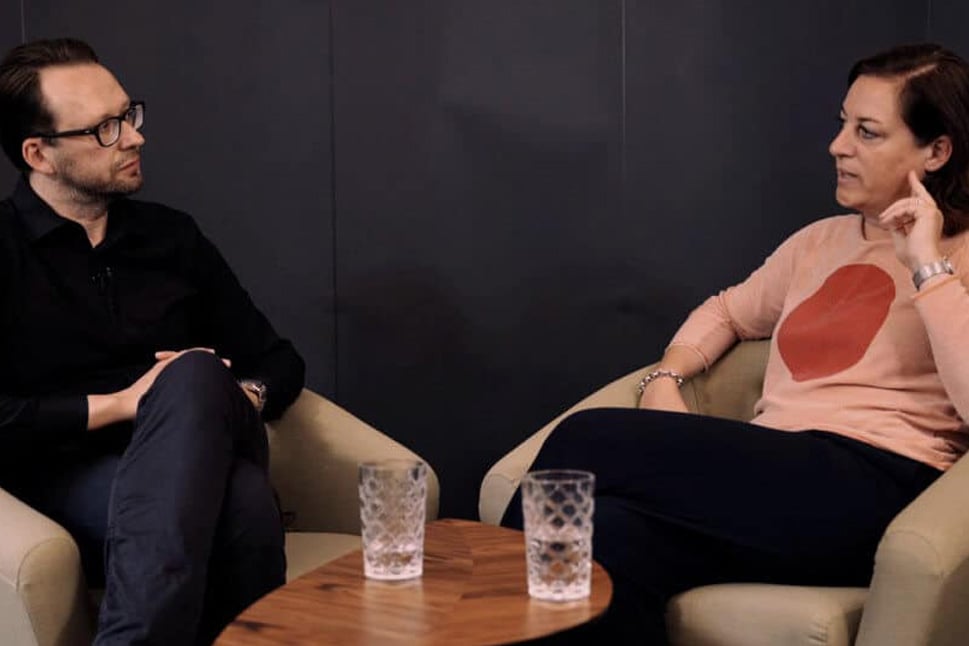
An Interview with Sandra Harzer-Kux from Territory
Sandra Harzer-Kux, Managing Director of Germany's leading brand content agency, Territory, in an interview with Gerrit Grunert.

Campaign Management 101: Campaign Layering
Ever wondered how you can convey brand values in a more creative way across multiple platforms? This blog provides an intro campaign layering.

Methodical Content Marketing: Persona Pt. 1
What advantages does persona development have for both sales and marketing teams? What can they add to content marketing? Read more about this works.

Reputation Marketing and ROI
Reputation management has ROI? Yes! And it should be considered reputation marketing instead! How does this work? Read more in this blog to find out!

How Much Does A Content Marketing Strategy Cost?
How much does a content marketing strategy cost? Which aspects go into developing a strategy? The content experts at Crispy Content® break this down.
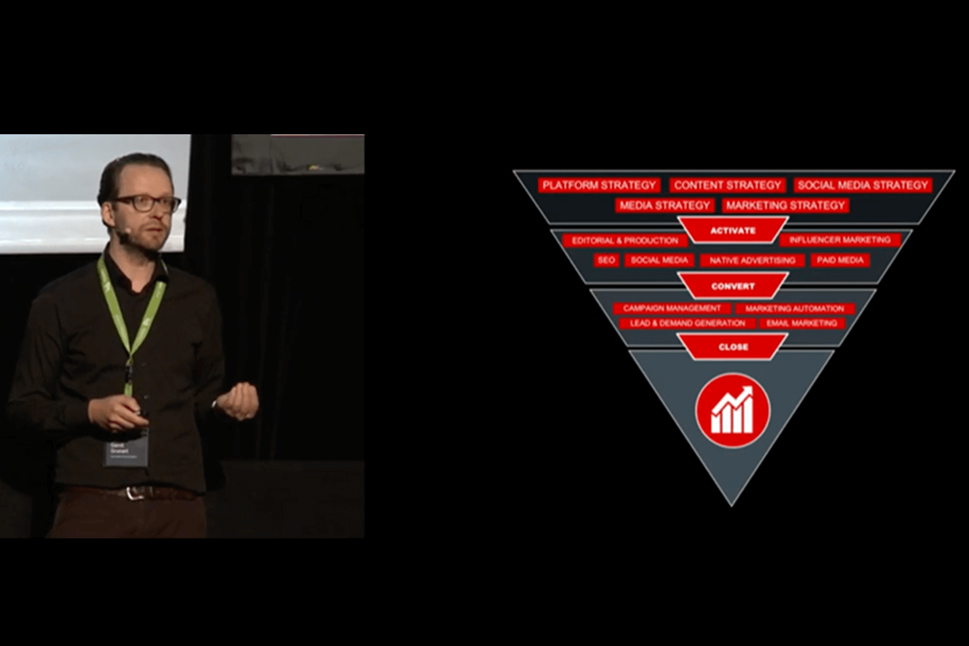
Mo' Money, No Problems – from Searchmetrics Summit 2017
How you can use an optimized customer journey to win over customers and many other topics in our Live Show from Searchmetrics Summit 2017!

Marketing Automation – From Persona to Personalization
Buyer personas are important, but how should you get your message across to individual users? Personalization is the key.

Checklist: Competitiveness Analysis in Content Marketing
Only those with an eye on the competitiveness can position their content marketing strategy successfully. Here’s a handy checklist.

Return On Content Marketing Investment
You’ve invested in a content marketing strategy – but has it been worth it? We show you how to calculate the ROI for your content marketing.

Conversion Optimisation in Content Marketing
In this blog post, we show you how to optimise your conversion rate within your lead generation activities.
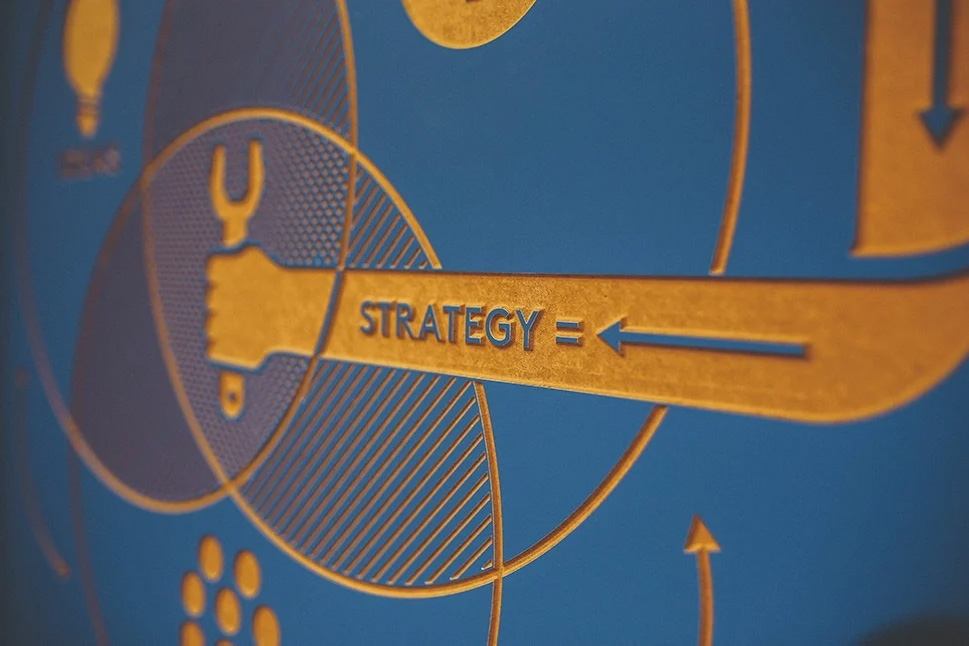
Content Marketing: From Strategy to Campaign and Back Again
Campaigns are the beating heart of a content marketing strategy, not merely the icing on the cake. Here’s a recipe to try “at home”.

How to Find the Right Content Marketing Agency
Finding the right content marketing agency can be tricky. These are our insider tips:

Predictive Lead Scoring – A Glimpse Into the Future
Predictive lead scoring builds on traditional methods, but exploits the possibilities of modern technology much more effectively. We show, how it's done!

Big Data in Content Marketing
Here, you can learn why big data is so important to your marketing activities and how your company can best process user-generated data masses.

How to Create a Content Marketing Strategy
Those wishing to invest in content marketing require a tailored strategy. In six easy stages, we show you how to get one.

Lead Scoring: The Highest Form of B2B Marketing
We show you how to use lead scoring to evaluate potential customers more effectively and bridge the gap between marketing and sales.

Next Level Lead Nurturing
Turning leads into customers requires a care, time and a suitable strategy. Lead nurturing accelerates this process significantly.

Outstrip Your E-Commerce Competition
How can online retailers steer the purchase decisions of potential customers – in all phases of the buyer's journey?

The 3 Biggest Content Marketing Pitfalls
Bad content marketing is often marked by the same recurring errors – three of which are particularly severe.

Storytelling: Why the Brain loves Stories
Storytelling and mirror neurons? We explain how to use neuroscientific research to tell stories that will delight your customers.

7 Email Marketing Trends You Should Know
Those who allow email marketing trends to pass them by will soon be watching the competition do the same. It's essential to keep these 7 points in mind.

Conventional Marketing Doesn't Work On Millennials
Millennials have announced it loud and clear: content marketing is the best way for marketers to reach their goals.

Why insurance companies should practice content marketing
How do insurance companies integrate content marketing into their marketing strategy?
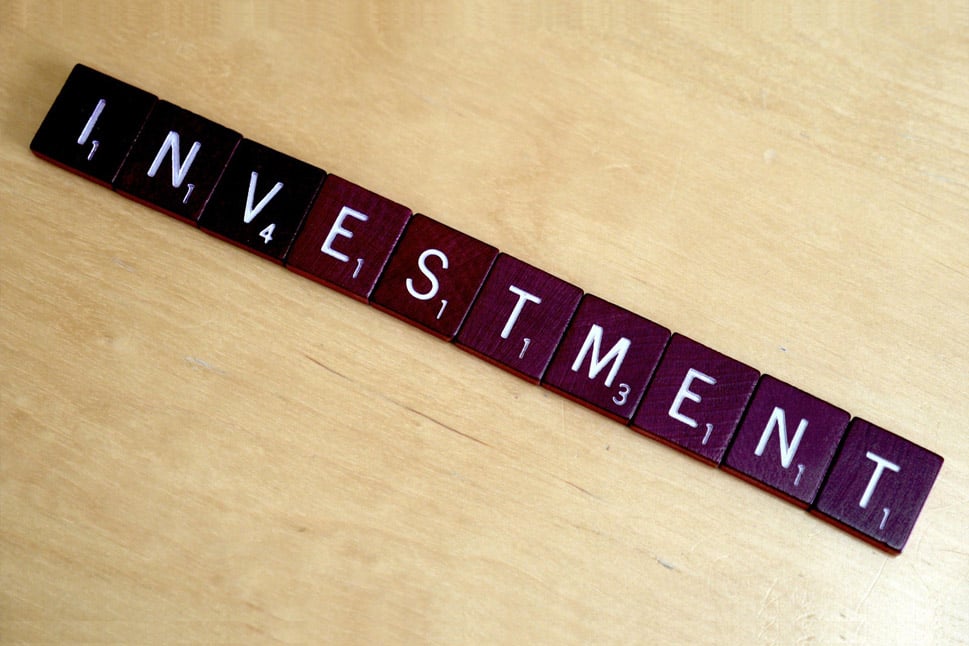
Content Marketing For Financial Services Providers
How important is content marketing to companies that deal with insurance, investment and financing and which strategies do they pursue?

Off-page analysis: Quality & quantity keywords
We’ll show you which SEO data is important for your keyword strategy and how you can benefit from your competitors’ success.

5 reasons hotel chains should practice content marketing
The Crispy Content Sector Review shows that hotel groups are still neglecting content marketing.

Six building blocks for successful localisation
We have created a checklist of the six building blocks of a high quality full service localisation.

4 reasons tour operators should practice content marketing
In our Crispy Content Sector Review we examine what companies within a specific sector can achieve with content marketing.

7 easy steps to the perfect long tail keyword
How can you improve your ranking efficiently and sustainably without spending money on it? We’ll show you how!

Storytelling competence: How to spot marketing talents
How can you even tell if an agency or freelancer can offer the required storytelling potential? We have compiled the key indicators for you!

Content Marketing on Instagram: 5 successful examples
We’ll show you how to realise your brand’s content marketing strategy using Instagram.

Content Marketing: 9 tips for a successful blog promotion
Networking, Social Media Marketing and Reposting: That's how you seed your Blog Content!
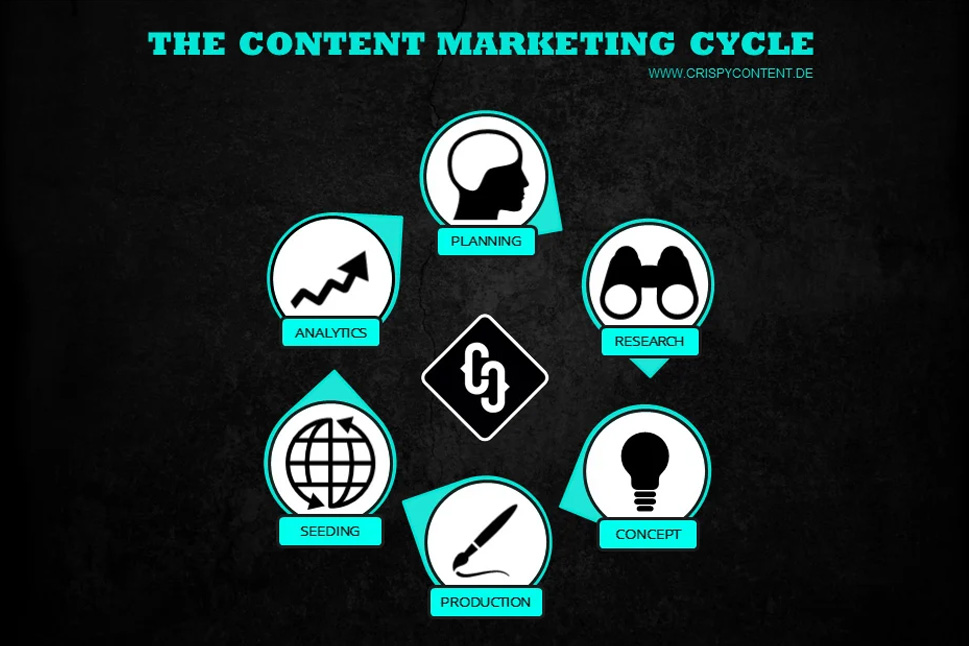
Your successful content marketing cycle in 6 steps
These 6 steps will help you develop your very own content marketing cycle.


![[FREE Ebook] Content Marketing Tools Essentials](https://no-cache.hubspot.com/cta/default/463294/02a763e7-df79-4758-ba35-000e19399736.png)